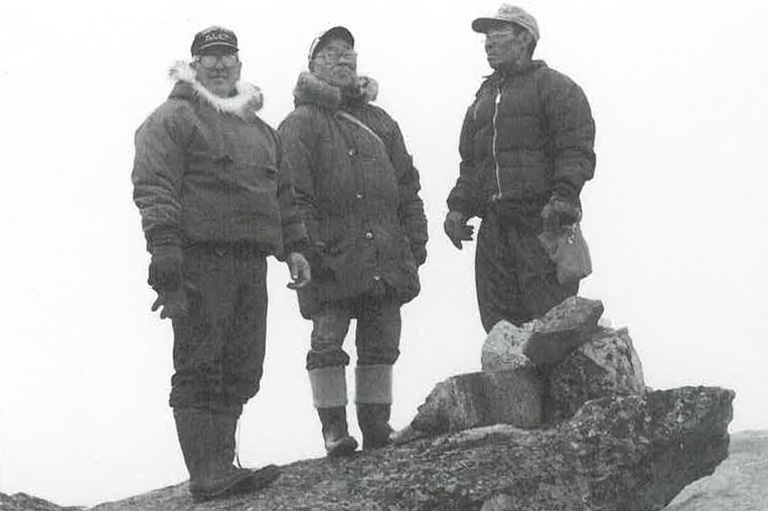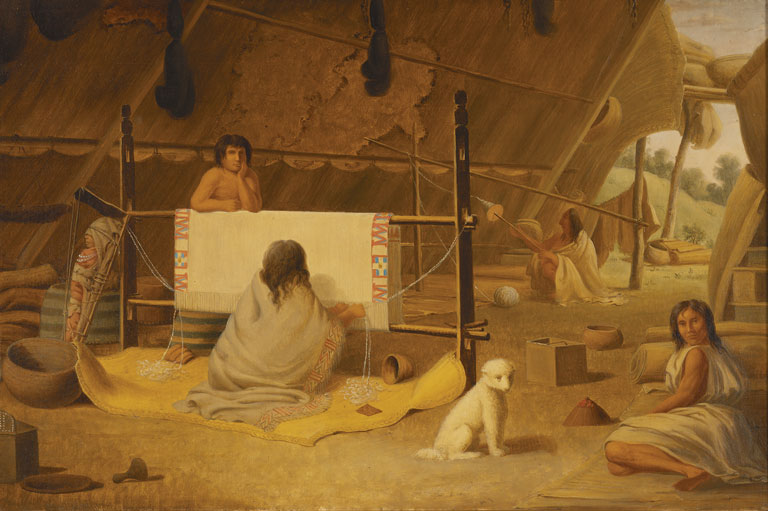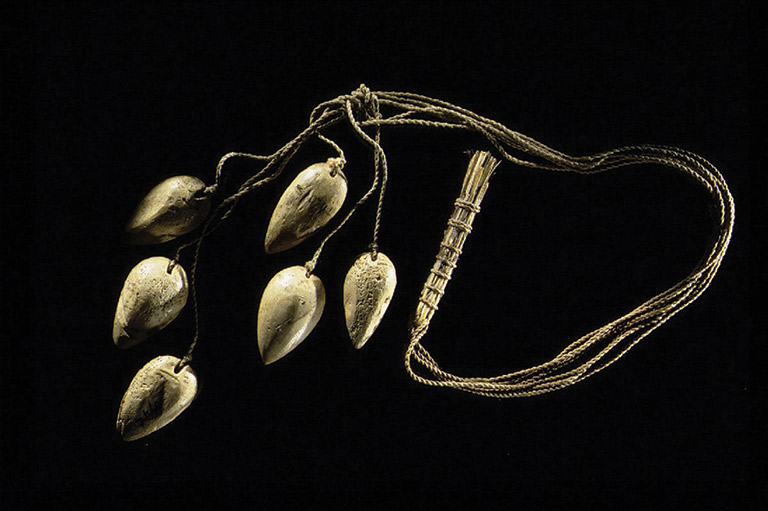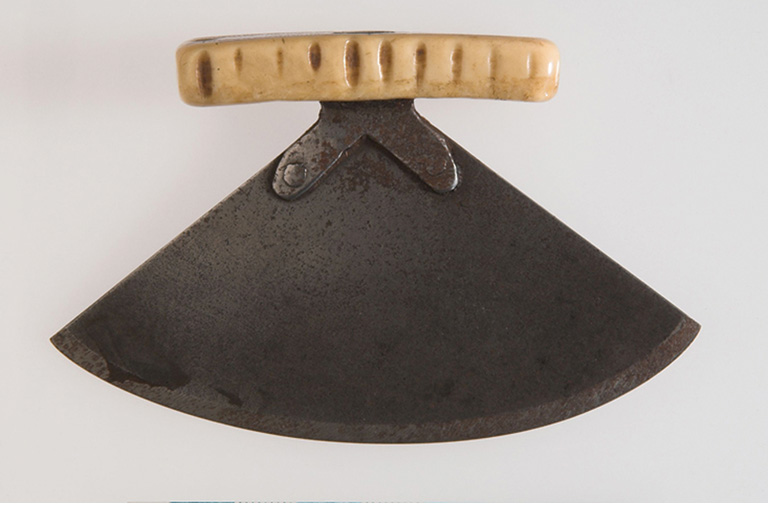Huron-Wendat Headdress
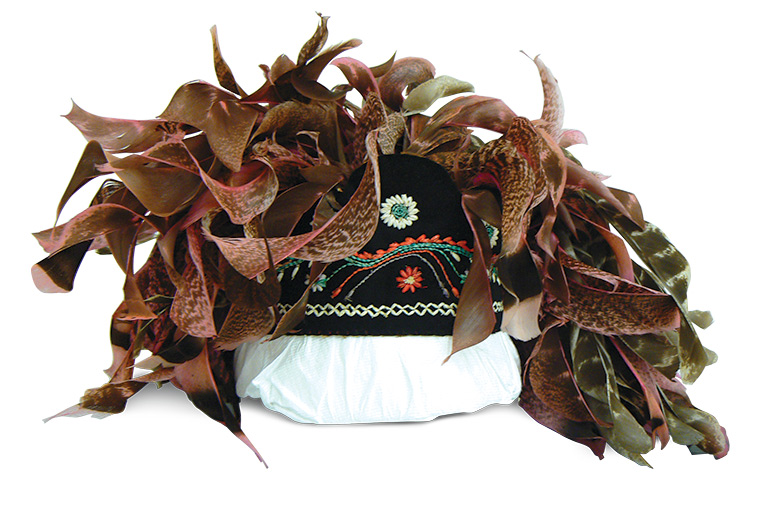
At the beginning of the seventeenth century, the Huron-Wendat Nation was a confederation of the nations of the Bear (Hatindiawanten), the Rock (Yärendahrönon), the Rope (Hatingênnoniahahk), the Deer (Tahonhtayenrat), and the Swamp (Ataronchrönon). The confederation was made up of several thousand people, and its territory extended from the Gaspé Peninsula to the Great Lakes. In the province of Quebec, the ancestral territory of the Wendat bears the name Nionwentsïo, which means “our magnificent territory.”
In the nineteenth century, colonization and the creation of private clubs, among other factors, made it difficult for the Wendat to practice customary activities in Nionwentsïo. In order to revitalize their economy, without abandoning the practice of their traditional activities on their territory, the Wendat turned to the production and sale of handicrafts. Some of these objects, such as headdresses, were not sold to visitors but instead were reserved for Wendat use. Whether or not they were intended for sale, each of these unique pieces demonstrated ingenuity in manufacturing techniques and ornamentation.
This traditional headdress bears witness to this Wendat ingenuity. It is composed of a felt and cotton headband, embroidered with sweet grass and porcupine quills, topped with twisted turkey feathers, some of which are dyed pink, and crowned with thin sheets of bark .
Made at the beginning of the twentieth century, this headdress is part of the Anne-Marie Sioui collection, kept at the Huron-Wendat Museum in Wendake. It probably belonged to Prudent Sioui, the father of Anne-Marie Sioui, and was part of his traditional regalia.
With 7 uniquely curated newsletters to choose from, we have something for everyone.
Themes associated with this article
Advertisement

